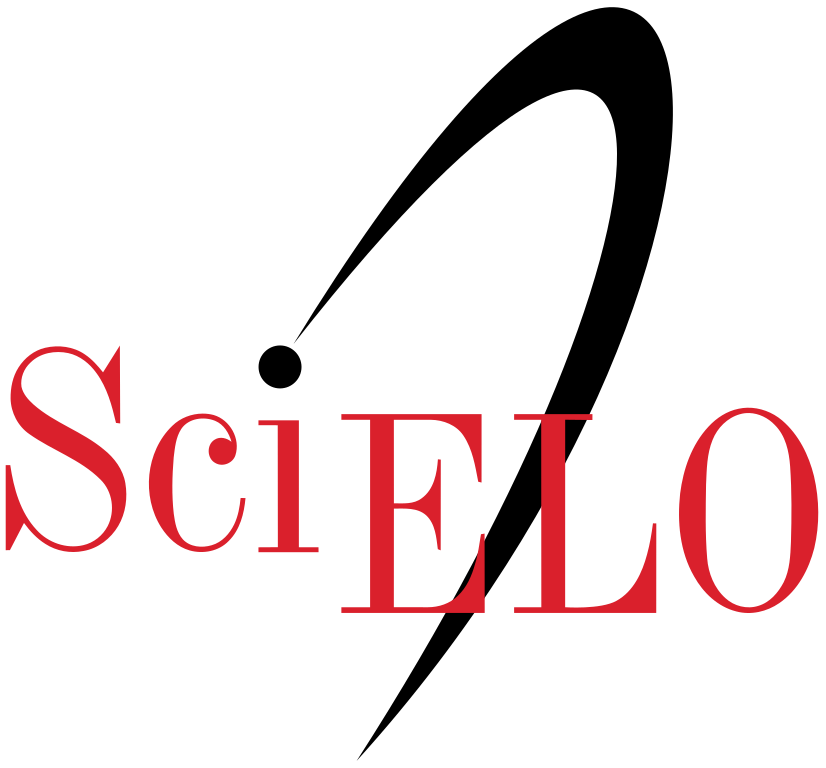In Vitro Antagonism of Nine Isolated Fungi from the Colombian Caribbean against Phytophthora sp., Associated with Oil Palm
DOI:
https://doi.org/10.14482/inde.39.2.579.546Keywords:
Antagonist, biocontrol, Elaeis guineensis Jacq, phytopathologyAbstract
Bud Rot Disease (BR), caused by Phytophthora palmivora, affects the yield and survival of oil palm crops in Colombia. With the objective of exploring biological control alternatives to the BR, we evaluated, under in vitro conditions, the antagonistic effect of nine filamentous strains fungi: Aspergillus clavatus, Aspergillus glaucus, Aspergillus niger, Aspergillus nidulans, Aspergillus terreus, Penicillium sp. 01, Penicillium sp. 02, Paecilomyces variotii y Trichoderma sp. against Phytophthora sp., isolated from an oil palm crop, in addition to a control trial. A randomized complete block design with four repetitions was established using the dual culture technique in petri dishes (Ø = 90 mm) with potato dextrose agar. We measured variables such as radial mycelial growth (RMG), mycelial growth rate (MGR), and inhibition percentage (IP), at 96 hours after treatment incubation. The statistical test revealed that Trichoderma sp. and A. niger were the superior trials (p?0,01), exerting 79 and 74 % of IP, respectively, against the oomycete. Furthermore, they restricted the RMG of the pathogen between 2 to 2,3 cm and limited its MGR up to 4 less times than the control trial. Three hierarchical conglomerates were formed according to the nine strains’ antagonistic performance confronted with Phytophthora sp. The outstanding isolates have potential as bioregulators of the pathogen.
References
S. Guha Roy, “Phytophthora: A Member of the Sixth Kingdom Revisited as a Threat to Food Security in the Twenty-First Century”, Value Addition of Horticultural Crops: Recent Trends and Future Directions, Springer, India, vol. 1.no. 1, pp. 325-337, febr. 2015. Doi: 10.1007/978-81-322-2262-0_19.
G. Sarria, G. Torres, H. Aya, J Ariza, J. Rodríguez, D. Vélez, F. Varón & G. Martínez, “Phytophtora sp. es el responsable de las lesiones iniciales de Pudrición del cogollo (PC) de la palma de aceite en Colombia”. Revista Palmas, vol. 29, edición especial, pp. 31-41, sept. 2008.
G. Torres, G.A Sarria, G.A., G. Martinez, F. Varon, A. Drenth, & D.I. Guest, “Bud rot caused by Phytophthora palmivora: A destructive emerging disease of oil palm”, Phytopathology, vol 106, no. 4, pp. 320-329, mar. 2016. Doi:10.1094/PHYTO-09- 15-0243-RVW.
L. Potter, “Colombia’s oil palm development in times of war and ‘peace’: Myths, enablers and the disparate realities of land control”, Journal of Rural Studies, vol 78, pp. 491-502, febr. 2020. Doi: 10.1016/j.jrurstud.2019.10.035.
Fedepalma, “Fedepalma, 55 años de gestión gremial para desarrollar y consolidar la agroindustria de la palma de aceite en Colombia”, El Palmicultor, vol. 552, pp. 5-7. 2018.
J. Gil, M. Herrera, J. Duitama, G. Sarria, S. Restrepo, & H.M Romero, “Genomic variability of Phytophthora palmivora isolates from different oil palm cultivation regions in Colombia”, Phytopathology, vol. 110, no. 9, pp. 1553-1564, jul, 2020. Doi: 10.1094/PHYTO-06-19-0209-R.
K. Avila Mendez, A. Rodrigo, L. Araque, & H.M Romero, “Simultaneous transcriptome analysis of oil palm clones and Phytophthora palmivora reveals oil palm defense strategies”, PloS one, vol. 14, no. 9, pp. 1-14, sept. 2019. Doi: 10.1371/journal.pone.0222774.
R. R. Paterson, “Future scenarios for oil palm mortality and infection by Phytophthora palmivora in Colombia, Ecuador and Brazil, extrapolated to Malaysia and Indonesia”, Phytoparasitica, Springer, vol. 48, pp. 513–523, may. 2020. Doi: 10.1007/s12600-020-00815-6.
M. Maizatul Suriza, M. Dickinson, & A. Seman Idris, “Molecular characterization of Phytophthora palmivora responsible for bud rot disease of oil palm in Colombia”, World Journal of Microbiology and Biotechnology, vol. 35, no. 3, pp. 35-44, febr. 2019. Doi: 10.1007/s11274-019-2618-9.
N. Arias, J. Beltrán, J. Guerrero, & A. Sánchez, “Tecnologías para el manejo de la Pudrición del cogollo (PC) de la palma de aceite validadas en las zonas palmeras de Colombia”, Revista Palmas, vol. 35, no 2, pp. 39-52, jun. 2014.
G. Martínez, J. Sanz, G. Torres, G. Sarria, D. Velez, et al., “The integrated management of bud rot disease and Phytophthora palmivora in oil palm”, Achieving Sustainable Cultivation of oil palm, vol 2: Diseases, Pests, Quality and Sustainability, Ed. Burleigh Dodds: science publishing, England, pp. 115-136. 2018. doi:10.19103/AS.2017.0018.30.
M.A. García Pinilla, “Evaluación de aislamiento de Trichoderma spp. para el control de Phytophthora palmivora agente causante de la Pudrición del cogollo de la palma de aceite”, Disertación trabajo de pregrado, Corporación Universitaria Minuto de Dios. 2017. Disponible en: repository.uniminuto.edu/bitstream/handle/10656/4882/T.AIG_GarciaPinillaAlejandraMilena_2017.pdf?sequence=1.
Fedepalma, (12 dic. 2020) “La palma de aceite en Colombia”, Portalweb.fedepalma.org/la-palma-de-aceite-en-colombia-departamentos, Registro actualizado con datos del Servicio de Información de precios del sector agropecuario (SIPSA) del Departamento Administrativo Nacional de Estadística de Colombia (DANE) [en línea]. Disponible en: www.dane.gov.co/index.php/servicios-al-ciudadano/servicios-informacion/sipsa.
B.I.P. Barratt, V.C. Moran, F. Bigler, & J. C. Van Lenteren, “The status of biological control and recommendations for improving uptake for the future”, BioConrol, Springer, vol. 63, pp. 155-167, jul. 2017. Doi: 10.1007/s10526-017-9831-y.
G. Martínez, G. Sarria, G Torres, & F. Varón, “Avances en la investigación de Phytophthora palmivora, el agente causal de la Pudrición del cogollo de la palma de aceite en Colombia”, Revista palmas, vol. 31, no. 1, pp. 55-63. 2010.
D.C. Erwin, & O.K. Ribeiro, “Phytophthora diseases worldwide”, The American Phytopathological Society, USA: APS-Press Minnesota. 1996.
I. R?ut, F. Oancea, A.B.L.S Trinidad, M. C?lin, D. Constantinescu-AruxandeI, M. Badea-Doni, M. Arsene, G. Valisescu, T. ?esan & L. Jecu, “Evaluation of Trichoderma spp. as a biocontrol agent against Phytophthora parasitica”, Scientific Bulletin. Series F. Biotechnologies, vol. 21, pp. 179-182, sept. 2017.
C. Guigón, V. Guerrero, F. Vargas, E. Carvajal, G.D. Ávila, L. Bravo, M. Ruocco, S. Lanzuise, S. Woo, & M. Lorito. “Identificación molecular de cepas nativas de Trichoderma spp. su tasa de crecimiento in vitro y antagonismo contra hongos fitopatógenos”, Revista Mexicana de Fitopatología, vol. 28, no. 2, pp. 87-96, ene. 2010
J.G. Aquino-Martínez, L.M. Vázquez-García & B.G. Reyes-Reyes, “Biocontrol in vitro e in vivo de Fusarium oxysporum Schlecht.f. sp. Dianthi (Prill. Y Delacr.) Snyder y Hans con hongos antagonistas nativos de la zona florícola de Villa Guerrero”, Revista Mexicana de Fitopatología, vol. 26, no. 2, pp. 127-137, ene. 2008.
J.A. Di Rienzo, F. Casanoves, M. Balzarini, L. Gonzalez, M. Tablada & C. Robledo. “InfoStat statistics software student version”, Grupo InfoStat, FCA, Universidad Nacional de Cordoba, Argentina, [en línea]. Disponible en: URL: http://www.infostat.com.ar/index.php?mod=page&id=30. 2017.
V.F. Quiroz-Sarmiento, R. Ferrera-Cerrato, A. Alarcón & M.E. Lara Hernández, “Antagonismo in vitro de cepas de Aspergillus y Trichoderma, hacia hongos filamentosos que afectan al cultivo del ajo”, Revista mexicana de micología, vol. 26, pp. 27-34, jun. 2008.
C.M. Cepero de García, S. Restrepo, A.E Franco, M. Cardenas & N. Vargas, “Biología de hongos”, Universidad de los Andes, Facultad de Ciencias, Departamento de Ciencias Biológicas, Ediciones Uniandes, pp. 520 pp. 2012.
M. Ezziyyani, C. Pérez, A. Ahmed, M. Requena & M. Candela, M. “Trichoderma harzianum como biofungicida para el biocontrol de Phytophthora capsici en plantas de pimiento (Capsicum annuum L)”. Anales de Biología, vol. 26, no. 26, pp. 35-45, may. 2004.
S. Carreño, J. Blanco & B. Villegas, “Selección de hongos biocontroladores de Phytophthora cactorum, agente causal de la Pudrición radical y de corona en manzano”, Agronomia, vol. 14, no. 1, pp. 89-96. 2006.
A. Almaraz, D. Alvarado & L. Saavedra, “Trampeo de Phytophthora cinnamomi en bosque de encino con dos especies ornamentales e inducción de su esporulación”, Revista Chapingo, vol 19, no. 1, pp. 5-12, ene. 2012.
K.A. Powell, A. Renwick & J.F. Peberdy, “The genus Aspergillus: from taxonomy and genetics to industrial application”, Springer Science & Business Media, vol. 69, pp. 359. 2013.
E. Schuster, N. Dunn-Coleman, J.C. Frisvad, & P.W. Van Dijck, “On the safety of Aspergillus niger–a review”, Applied microbiology and biotechnology, vol. 59. no. 4, pp. 426-435, agos. 2002. Doi: 10.1007/s00253-002-1032-6.
S.A. El-Debaiky, “Antagonistic studies and hyphal interactions of the new antagonist Aspergillus piperis against some phytopathogenic fungi in vitro in comparison with Trichoderma harzianum”, Microbial pathogenesis, vol. 113, pp. 135-143, dic. 2017. Doi: 10.1016/j.micpath.2017.10.041.
R.F. Lazo & G. Sierra, “Investigación del efecto de las micotoxinas en el ser humano”. Revista Iberoamericana de Micología, vol. 25. no. 1, pp. 7-11. 2008.
L.A. Tell, “Aspergillosis in mammals and birds: impact on veterinary medicine”, Medical Mycology, vol 43, (Supplement 1), S71-S73. 2005. Doi: 10.1080/13693780400020089.









